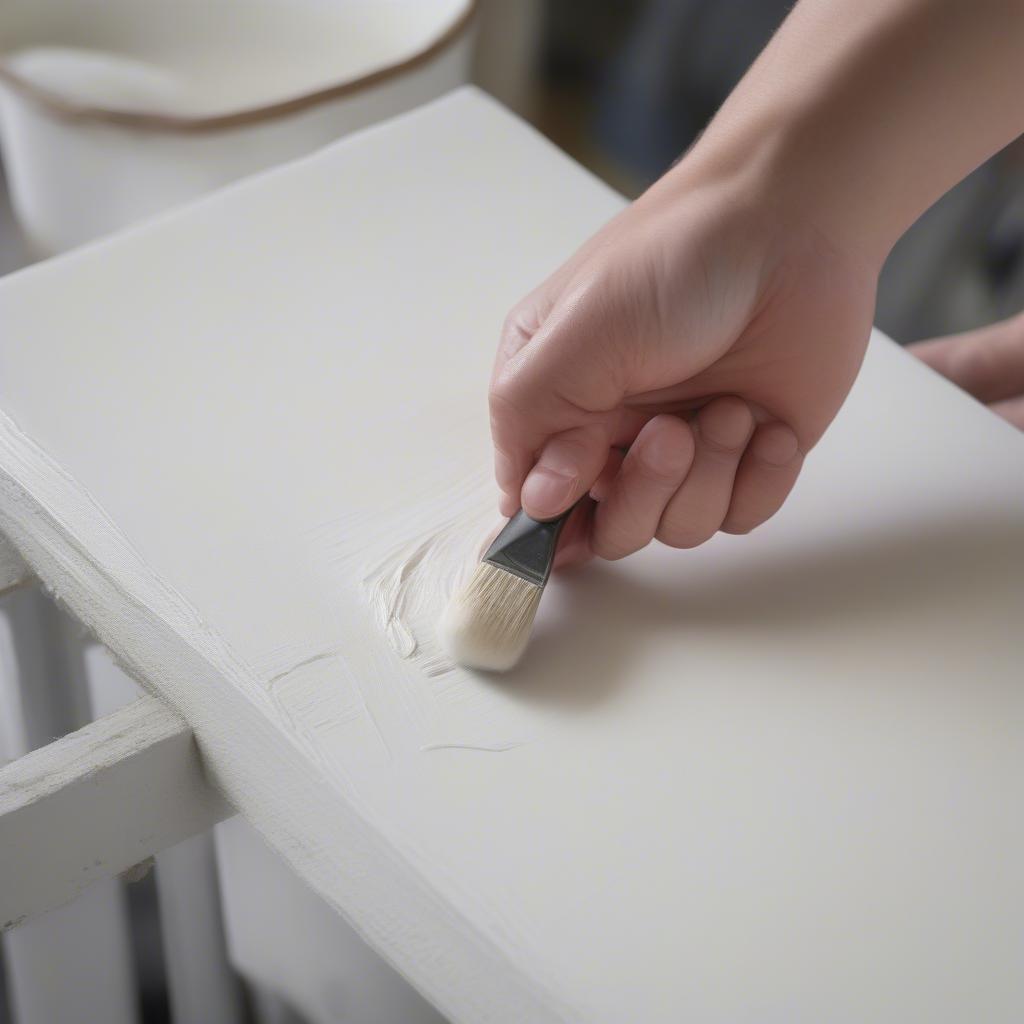Creating your own canvas can be a rewarding experience, transforming a simple piece of fabric into a blank slate for your artistic vision. Whether you’re a seasoned painter or just starting out, understanding how to prepare your own canvas can save you money and allow you to customize the surface to perfectly suit your needs. This guide will walk you through the process of making your own canvas, from choosing the right materials to stretching and priming it for painting.
Choosing the Right Materials for Your Canvas
The first step in making your own canvas is selecting the appropriate materials. This includes the canvas fabric, stretcher bars, and priming supplies. Choosing high-quality materials will ensure a durable and professional-looking finished product.
Canvas Fabric
Opt for a tightly woven canvas fabric, typically made from cotton or linen. Linen offers a smoother surface, ideal for detailed work, while cotton is a more affordable option. Consider the weight of the canvas; a heavier weight will be more robust but harder to stretch.
Stretcher Bars
Stretcher bars are the wooden frames that provide structure for your canvas. They come in various sizes and depths. Choose kiln-dried wood to prevent warping. Look for stretcher bars with beveled edges to prevent the wood from imprinting on the canvas.
Priming Supplies
Priming prepares the canvas surface for painting. You’ll need gesso, a white acrylic primer, which can be purchased pre-mixed or in powder form. Other priming options include rabbit skin glue or oil-based primers, depending on the type of paint you plan to use. make your own canvas offers some excellent tips on choosing the right primer.
 Choosing the Right Canvas Fabric
Choosing the Right Canvas Fabric
Stretching Your Canvas
Stretching the canvas properly is crucial for a taut and even painting surface. Follow these steps for a successful stretch:
- Lay your canvas fabric flat on a clean surface, larger than your stretcher bars.
- Place the assembled stretcher frame on top of the fabric.
- Fold one edge of the fabric over the stretcher bar and staple it securely in the center of the bar.
- Repeat on the opposite side, pulling the fabric taut before stapling. Maintain even tension to prevent wrinkles.
- Fold and staple the remaining two sides, working from the center outwards and ensuring the fabric remains taut.
- Fold and staple the corners neatly, creating a mitered edge.
how to make your own canvas prints provides more detailed instructions on stretching various canvas sizes.
 Step-by-Step Canvas Stretching Guide
Step-by-Step Canvas Stretching Guide
Priming Your Canvas
Priming creates a barrier between the canvas fabric and the paint, preventing the paint from absorbing into the fabric and ensuring vibrant colors.
- Apply a thin, even coat of gesso to the stretched canvas using a brush or roller. make your own picture canvas offers advice on achieving a smooth gesso application.
- Allow the gesso to dry completely.
- Lightly sand the surface with fine-grit sandpaper for a smoother finish.
- Apply a second coat of gesso, perpendicular to the first.
- Repeat the drying and sanding process. You can apply additional coats if desired.
“Proper priming is essential for a professional-looking canvas,” says renowned artist Amelia Dubois. “It not only ensures vibrant colors but also protects the canvas from damage over time.”
 Applying Gesso to Stretched Canvas
Applying Gesso to Stretched Canvas
Conclusion
Making your own canvas allows for complete creative control, from choosing the perfect fabric and size to customizing the priming for your specific painting needs. By following these steps, you can create a high-quality canvas that will showcase your artwork beautifully. Remember to select the right materials, stretch your canvas tautly, and apply gesso evenly for a professional finish. Now you’re ready to begin your next masterpiece! how to make your own photo canvas can give you more ideas on how to use your custom canvas.
FAQ
- What type of fabric is best for a canvas?
- What are stretcher bars made of?
- How many coats of gesso should I apply?
- Can I use oil-based primers on a cotton canvas?
- How do I prevent wrinkles when stretching the canvas?
- What is the purpose of priming a canvas?
- Where can I find high-quality canvas materials?
For further support, please contact us at My Dinh, Hanoi, Vietnam or San Francisco, CA 94105, USA. We have a 24/7 customer support team.


